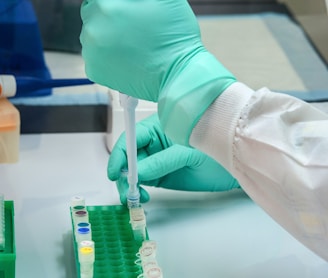Demystifying Laboratory Developed Tests: Understanding their Significance and Operation
In the world of modern medicine and diagnostics, Laboratory Developed Tests (LDTs) play a pivotal role in patient care. These tests are often the unsung heroes behind accurate diagnoses, personalized treatment plans, and ongoing medical research. In this comprehensive blog, we will delve into the realm of Laboratory Developed Tests, exploring what they are, how they work, their significance in healthcare, and the regulatory landscape that governs them.
John McKellips
9/2/20233 min read


Title: Demystifying Laboratory Developed Tests: Understanding their Significance and Operation
Introduction
In the world of modern medicine and diagnostics, Laboratory Developed Tests (LDTs) play a pivotal role in patient care. These tests are often the unsung heroes behind accurate diagnoses, personalized treatment plans, and ongoing medical research. In this comprehensive blog, we will delve into the realm of Laboratory Developed Tests, exploring what they are, how they work, their significance in healthcare, and the regulatory landscape that governs them.
What Is a Laboratory Developed Test (LDT)?
A Laboratory Developed Test, often abbreviated as LDT, is a diagnostic test created and validated within a single laboratory, typically a clinical or reference laboratory. Unlike commercial diagnostic tests, which are manufactured by diagnostic companies and sold to multiple healthcare facilities, LDTs are designed and performed by individual labs. These tests are essential for addressing specific diagnostic needs that may not be met by commercially available tests.
The Significance of LDTs in Healthcare
LDTs offer several advantages in the healthcare landscape:
Customization: LDTs can be tailored to address unique patient populations or diseases that may not be common enough to attract commercial test development.
Rapid Response: Labs can quickly develop and validate LDTs in response to emerging health threats, such as infectious disease outbreaks or novel variants.
Research and Innovation: LDTs serve as a critical tool for medical research, enabling scientists to explore new biomarkers, discover potential drug targets, and advance our understanding of diseases.
Personalized Medicine: They enable the practice of personalized or precision medicine by providing tailored diagnostic information for individual patients.
How Does an LDT Work?
Laboratory Developed Tests can encompass a wide range of diagnostic methods, from simple biochemical assays to complex molecular analyses. Here is a step-by-step overview of how an LDT typically works:
1. Test Development
The process begins with identifying a specific diagnostic need. Laboratory scientists, often working in collaboration with clinicians, design the test. This includes selecting the appropriate methodology, defining test parameters, and establishing performance criteria.
2. Validation
Validation is a critical step to ensure the test's accuracy and reliability. This involves testing a statistically significant number of patient samples with known conditions to confirm that the test produces consistent and accurate results.
3. Quality Control
To maintain the quality and accuracy of the test, laboratories implement rigorous quality control measures. This includes monitoring equipment performance, calibrating instruments, and regularly reevaluating test procedures.
4. Testing Process
Once validated and quality-controlled, the LDT is ready for clinical use. When a patient's sample, such as blood or tissue, is collected, it is processed in the laboratory following specific protocols. The sample is then subjected to the LDT to analyze the targeted biomarkers or genetic material.
5. Data Analysis
The results generated by the LDT are analyzed by skilled laboratory professionals. This analysis involves interpreting the data and determining whether the patient's sample contains markers or genetic variations associated with a specific disease or condition.
6. Reporting
The final step is the generation of a comprehensive test report. This report includes the patient's information, the test results, and an interpretation of the findings. Clinicians use this report to make informed decisions about patient care and treatment.
Regulatory Oversight of LDTs
Laboratory Developed Tests have historically operated in a regulatory gray area. They were subject to minimal oversight by the U.S. Food and Drug Administration (FDA) under the "enforcement discretion" policy. However, in recent years, there have been efforts to increase regulatory scrutiny of LDTs to ensure their safety and efficacy.
In 2020, the FDA introduced a draft guidance outlining a risk-based approach to regulate LDTs, especially those used in high-risk situations or with significant public health implications. The goal is to strike a balance between innovation and patient safety while ensuring that LDTs meet specific quality standards.
Conclusion
Laboratory Developed Tests are indispensable tools in modern healthcare. They empower healthcare providers with the flexibility to design and implement diagnostic solutions tailored to unique patient needs. Understanding the significance of LDTs, their operational process, and the evolving regulatory landscape is essential for healthcare professionals, researchers, and patients alike. As science and technology continue to advance, LDTs will remain at the forefront of diagnostic innovation, helping to improve patient care and advance medical knowledge.
Sound Medical Lab Consultants
sales@soundlabconsult.com
602-874-1311
National Clinical Lab Consultants for CLIA COLA CAP TJC
24/7/365 Support
Laboratory Billing Experts
Mobile Laboratory Billing
Lab Lead Gen and Sales
Lab Phone Support and Data Entry
Lab Back End Support
Lab Critical Call Services
